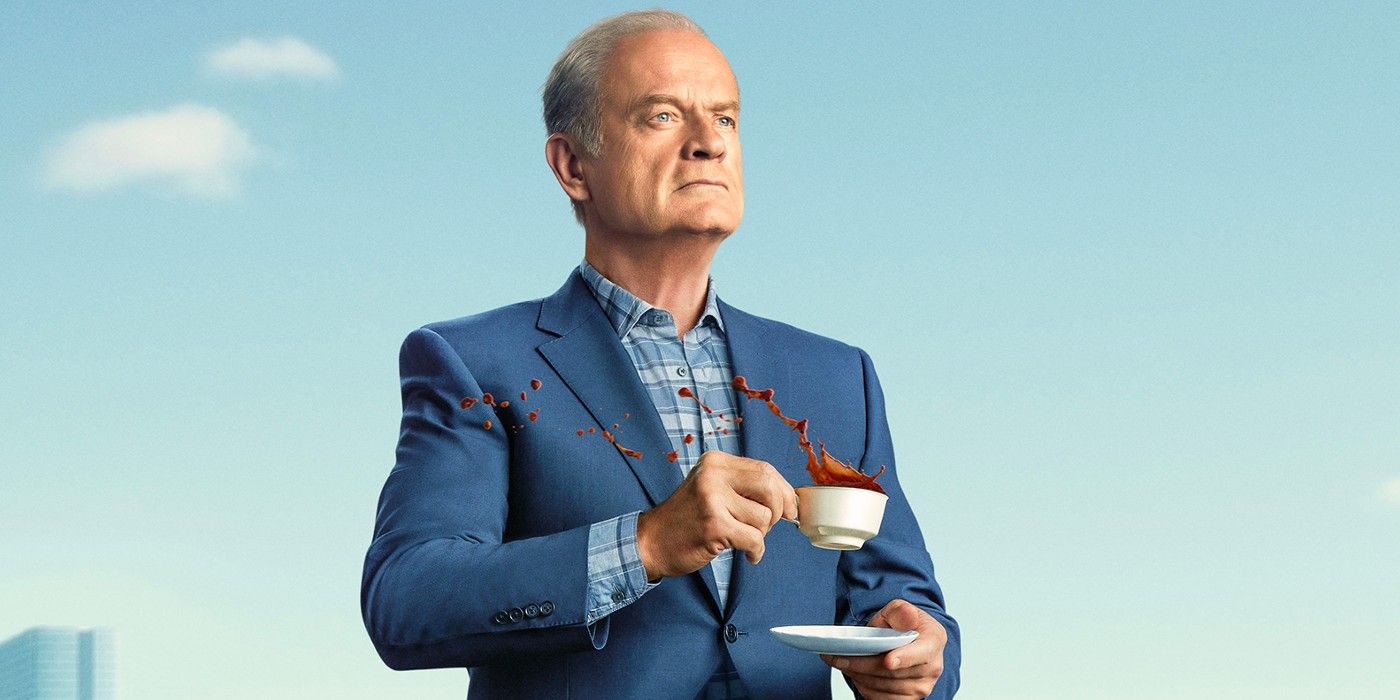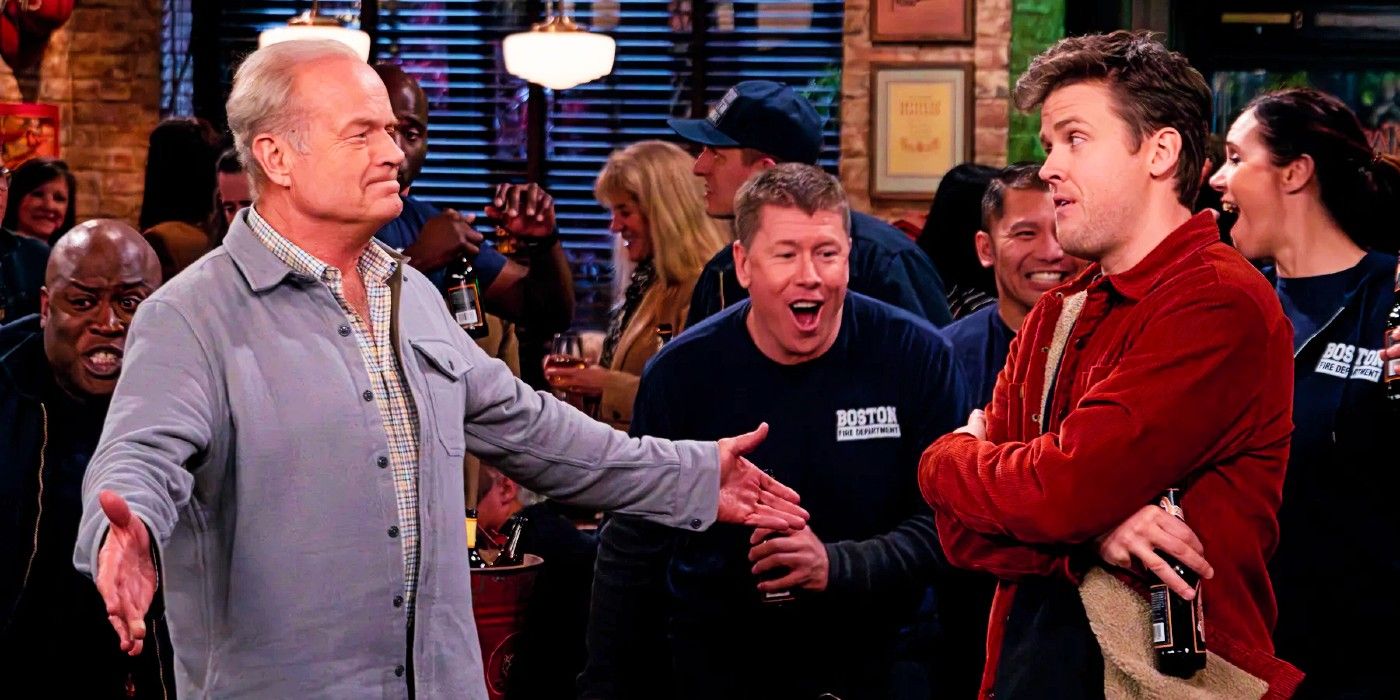Summary
- The Frasier reboot brings back the nostalgia and showcases the greatness of the original show, with Kelsey Grammer reprising his role as Frasier Crane.
- The reboot addresses narrative issues by having Frasier return to Boston and focus on mending his relationship with his grown-up son, Freddy, providing a new storytelling goal.
- While the Frasier reboot has some flaws and pacing issues, it successfully balances familiar elements with new storytelling, offering potential for improvement in future episodes.
The Frasier reboot leans on nostalgia, highlighting just how great the original show was. Kelsey Grammer has officially returned as Frasier Crane in the Paramount+ revival of the most Emmy decorated comedy series. In the Frasier reboot, Frasier finds himself back in Boston, his old haunt in Cheers. Doing so solves a couple of narrative issues for the endeavor. It explains the absence of Niles Crane and Daphne Moon, as both are still based in Seattle; it gives the show a concrete storytelling goal for the character, which is to mend his fractured relationship with his grown-up son, Freddy; and despite Frasier's history with Boston, he no longer hangs out with the people at Cheers. This paves the way for the reboot to introduce a new ensemble led by legendary British comedy actor, Nicholas Lyndhurst as Frasier's old Oxford buddy.
Premiering with two episodes, the Frasier reboot expectedly established the premise of the new show while offering updates about what has happened in the Frasier Crane universe. Apparently, Frasier spent the last two decades in Chicago, where he became a successful TV host. He had to return to Seattle for the funeral of his beloved father, Martin Crane, which Freddy missed. Both outings were directed by legendary director James Burrows, who helmed the original series pilot and then several more. Grammer is still phenomenal as Frasier Crane; it's as if he never left — except for his wardrobe. Unless there's a justified reason for Frasier to wear orthopedic shoes with a more relaxed blazer and jeans combo, it's a massive miss. For someone who wore tailored three-piece suits in both Cheers and Frasier, one would think that his aesthetic would only get better over the years, but that isn't the case. Meanwhile, Lyndhurst is also a wonderful addition as Alan. While he is the unofficial replacement for Niles, he is different enough to create an entirely new dynamic.
Admittedly, there was nervous anticipation for Jack Cutmore-Scott's Freddy since his relationship with Frasier will be the emotional backbone of the revival (similar to Frasier and Martin's in the original show). Cutmore-Scott's version of the role barely resembles his predecessor, but it doesn't really have any bearing on the storytelling. Instead, this iteration is more reminiscent of Martin, and Cutmore-Scott plays it effectively, resulting in a less dramatic but still engaging relationship with Grammer's Frasier. Aside from that, the Frasier reboot also gives Freddy his own personal arc involving Eve, the partner of his late fellow firefighter, creating a connection that has never been done in the franchise before.
Since both Grammer and Burrows are involved in laying the groundwork for the more diverse Frasier reboot, it clearly understands what made its parent series succeed. The new show's humor is layered, marrying sophisticated with slapstick comedy, which the original sitcom was known for. However, there are issues in execution. The opening sequence is rough, with the antics of Keith Anders' David, Niles and Daphne's son, falling flat. He eventually redeems himself in episode 2's tag, where he brings out his handkerchief to ever so lightly polish Frasier's piano — a signature trait of his father. Of the five episodes of the Frasier reboot that have been made available for review, the endeavor shines the brightest when it doesn't shy away from more dramatic elements. Frasier's conversation with Freddy at the end of episode 1 about the death of Martin (which is handled beautifully) and their falling out is a standout sequence. There are no jokes and laughter for an extended period of time, which is bold for a comedy show, but was the norm in the original series. This is repeated in the final shot of episode 4 as the father and son sit down for a meal. It's a fairly simple set-up, but it speaks to the heart of the narrative.
Although the success of the original series paves the way for its return, it also creates its biggest challenge as it sets the bar high for its successor. It is arguably unfair to do a strict one-to-one comparison between the first five episodes of the original and the revival. The 1994 Frasier was a well-oiled machine from the get-go despite being a massive risk for NBC. However, because it was so different from Cheers, it was easier to get on board with Frasier's new life in Seattle. The reboot, however, still has some kinks that need working out. Unsurprisingly, its strongest episodes are its first two because they focus on the most fleshed-out part of its narrative: Frasier's family. Sadly, his post-celebrity Harvard life isn't engaging enough. Unlike his KACL gig, which highlights his genuine interest in helping others, his new job doesn't serve his goal of making a significant impact in honing the minds of his contemporaries. He is dumbed down by being forced to resort to his old TV ways by his new boss, Olivia, and is not given the opportunity to use his unique gift of being able to connect with people. The original series subjects Frasier to well-deserved humiliating experiences to humble him, creating both comedic and teachable moments. His Harvard storyline, however, feels like he is being taken advantage of for no reason at all.
There are countless callbacks and Easter eggs in the Frasier reboot — something that fans of the original show will be delighted by. The majority of them are done tastefully, organically added to scenes, so they don't distract from the current storytelling. A great example of this is Frasier's quip about underperforming dinners, which is a running gag during his days in Seattle. Despite fully knowing the majority of its initial audience will be people who have seen the original, the Frasier reboot doesn't fall into the trap of relying way too much on the success of its predecessor. There is no recreation of any single character, although some of them have hallmarks of previous beloved players such as Eve having Roz's wit and playfulness, Alan with Niles' penchant for poking fun at Frasier, and Freddy with Martin's sensibility. Freddy and Frasier's living arrangement clearly borrows from the first series, but the circumstances surrounding it are different, as well as the specifics of their contentious relationship. This allows the revival to do something comfortingly familiar while also carving a different path for its characters.
While the Frasier reboot is inferior to its predecessor, it's as good as it can be for a show that doesn't have elements that made the original great. The series recognizes what made the Seattle series great and borrows elements from it, but it also offers something new to the audience. It has some pacing issues and some jokes fall flat, but its core story is thoughtfully planned. There are pockets of brilliance in the Frasier reboot's first five episodes, and depending on what the back half of the season does, it has the potential to get better in the future. At the very least, it deserves a chance.
The first two episodes of the Frasier reboot are now available to stream on Paramount+, with new episodes released every Thursday.



